
With the help of biologist Sebastian Bugariu from the Ornithological Society of Romania, we are trying to explain at the beginning of the summer season how important pelicans are to Romania’s environment and why we should protect them.
Near the city of Nevodari, next to the industrialized area, there is Lake Tasaul. In the middle of the water, on an island, in the first half of the year, through binoculars or a tube, you can observe a single colony of crested pelicans, which is located outside the Danube Delta Biosphere Reserve.
The curled pelican is one of Europe’s most spectacular birds. Watching him eat or take off is a real sight. It weighs more than 10 kilograms, and its wingspan exceeds three meters.
The curled pelican is an emblematic species for the Danube Delta (but also for other areas), classified as “Near Threatened” on the IUCN Red List. Worldwide, the Cretan pelican population is estimated at 11,400 – 13,400 individuals, while in Romania, 794 individuals were counted during the last winter monitoring.
The number is encouraging, especially since last year was the worst bird flu epidemic to hit this species. In August 2022, the Romanian Ornithological Society reported how the disease had caused mass deaths of pelicans in several areas in the Balkans.
Greece, for example, has lost almost 40% of its total crested pelican population, and high mortality cases have also been reported in Albania, as well as in Montenegro.
In Romania, the total number of adult birds that died in the colonies was 158, which is almost a fifth of the adults nesting in our country. Most of them (98) were confirmed in colonies located in Lake Sinoe, and 24 were recorded in Lake Tasaul.
“The curled pelican is a species that really needs conservation, and one of the most important things is to support the growth of the colony. Any event that leads to an unexpected decrease in the number of individuals can greatly affect the population as a whole,” said Sebastian Bugariu, a biologist at the Romanian Ornithological Society (SOR) and coordinator of the Pelican Lifestyle project.
There are two species of pelicans in our country, as the biologist explains, namely the common pelicans, those that nest in large numbers in one colony in the delta and can reach several tens of thousands, and the crested pelican, another, slightly larger species that does not migrate until of Africa, like the less numerous common pelican.
This is a strictly protected species and an important indicator of environmental health. Bugariou also suggests that it is a colonial and gregarious species that nests in groups where there is a high degree of social interaction between individuals in a colony that has some fidelity to nesting sites.
The only colony outside the Danube Delta that appeared ten years ago
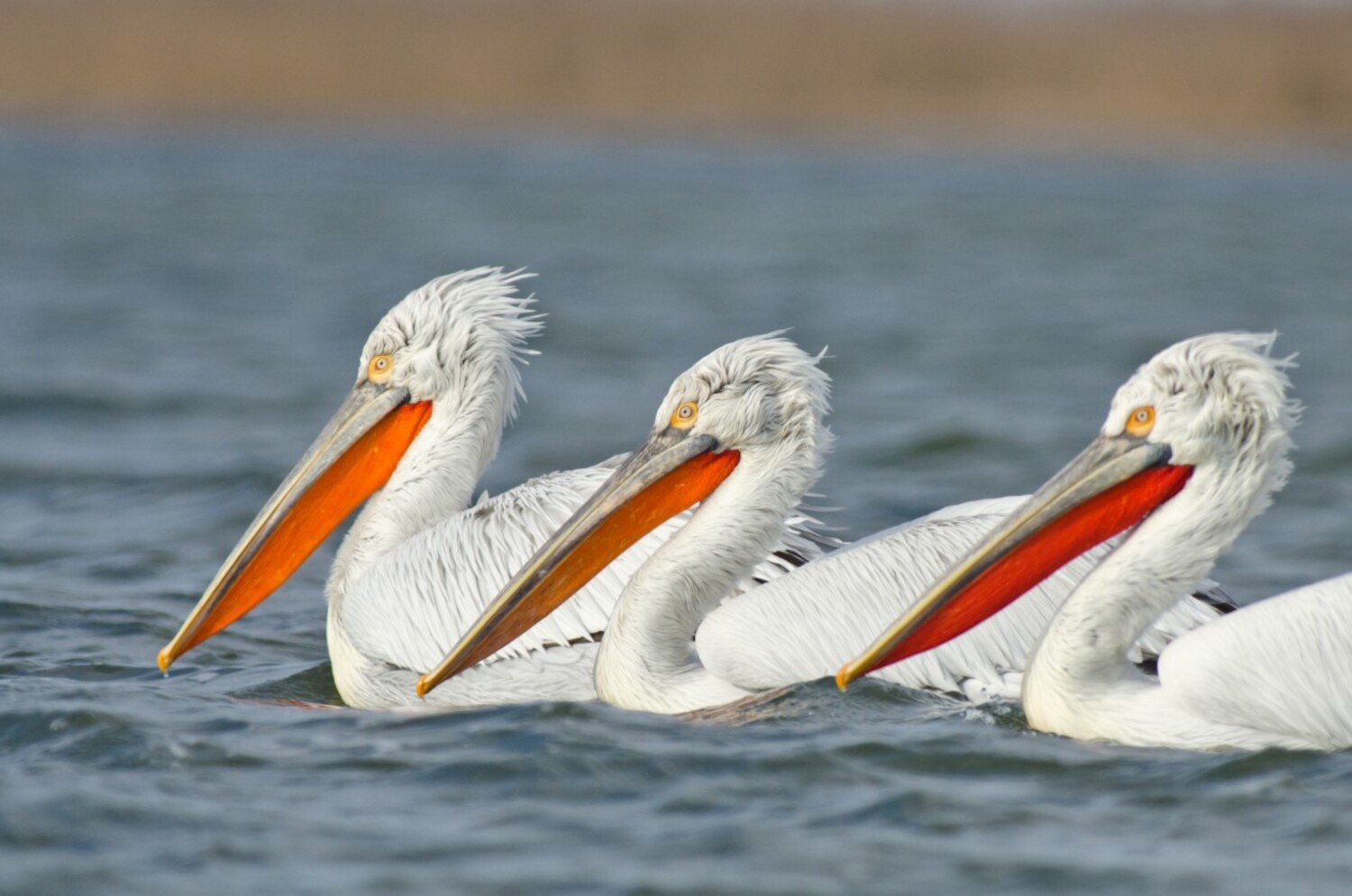
Crested pelicans. PHOTO: Sebastian Bugariou
“About 10 years ago, four or five pairs of crested pelicans appeared at Tasaul Lake and their numbers gradually increased as they encountered very good conditions in the area. Now there are 50 to 60 pairs here, a very good number,” says the biologist.
Sébastien Bugariu emphasizes the special significance of the fact that a new colony has been established here, outside the Danube Delta, indicating a resurgence of the population, which is beginning to reoccupy different areas of the old nesting area and form new colonies. .
Crested pelicans can be seen in the Tasaul colony during the first half of the year when they are in the nesting period. They do not migrate long distances, but in the winter months accumulate in large numbers in various areas, in the delta or in Bulgaria, where it is cold here, because the limiting factor is frost.
The colony near Nevodari is mixed, and along with Cretan pelicans (which have more gray plumage), common pelicans or cormorants can also be seen. Crested pelicans start nesting in Romania in January, although there is no bad date or period for this.
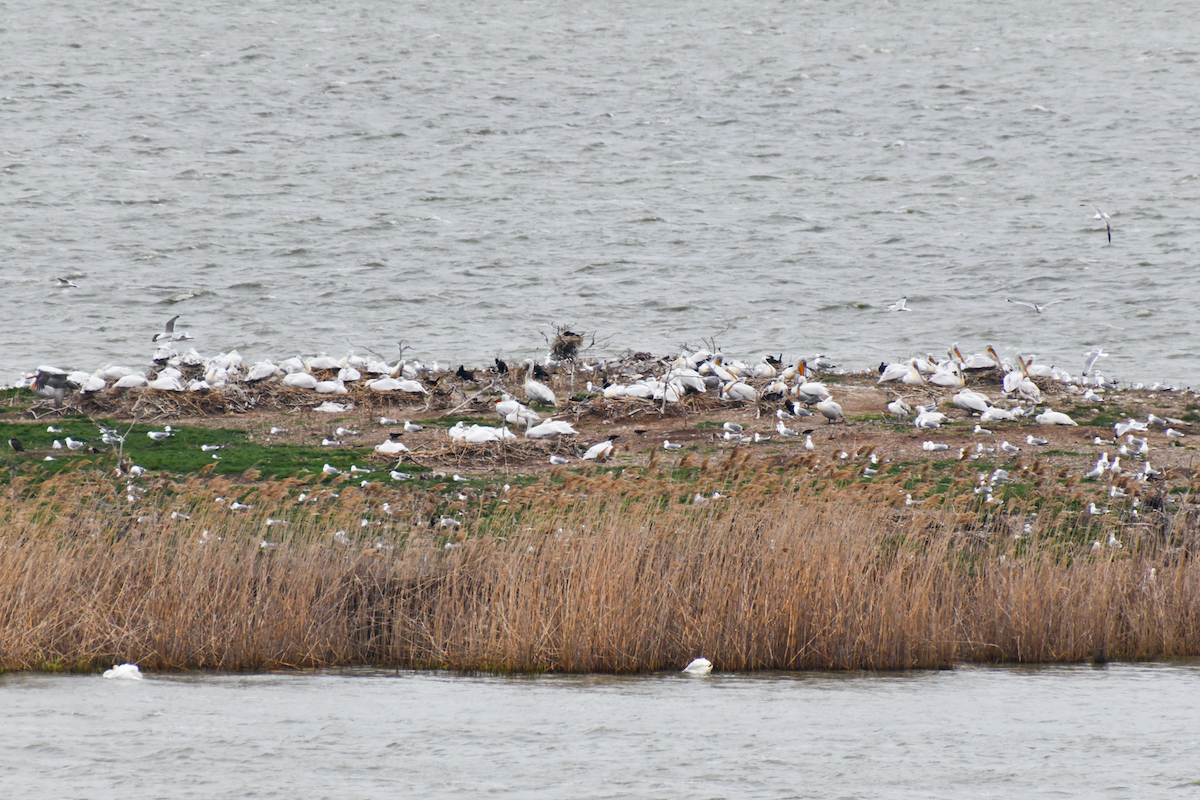
Pelicans were bred on Tasaul Island. PHOTO: Sebastian Bugariou
“The species nests asynchronously, that is, some pairs that arrive very early are already building a nest, while others arrive later, so you can see both large and very small chicks in the colony. Adult couples, experienced, start earlier, and those who are just learning, later,” says Bugariu.
The biologist explains that a few dozen years ago nesting took place in March, now it can happen in February.
“In general, if adults leave the nest as eggs, they may become prey to predatory species such as crows or gulls. In Tasaoul you can also see seagulls or cormorants among the Cretan pelicans, but they are not a danger because there is a natural dynamic of the colony, but if it is disturbed, eggs and chicks may be lost.” , – adds the biologist.
“How appropriate is it to popularize these areas?”
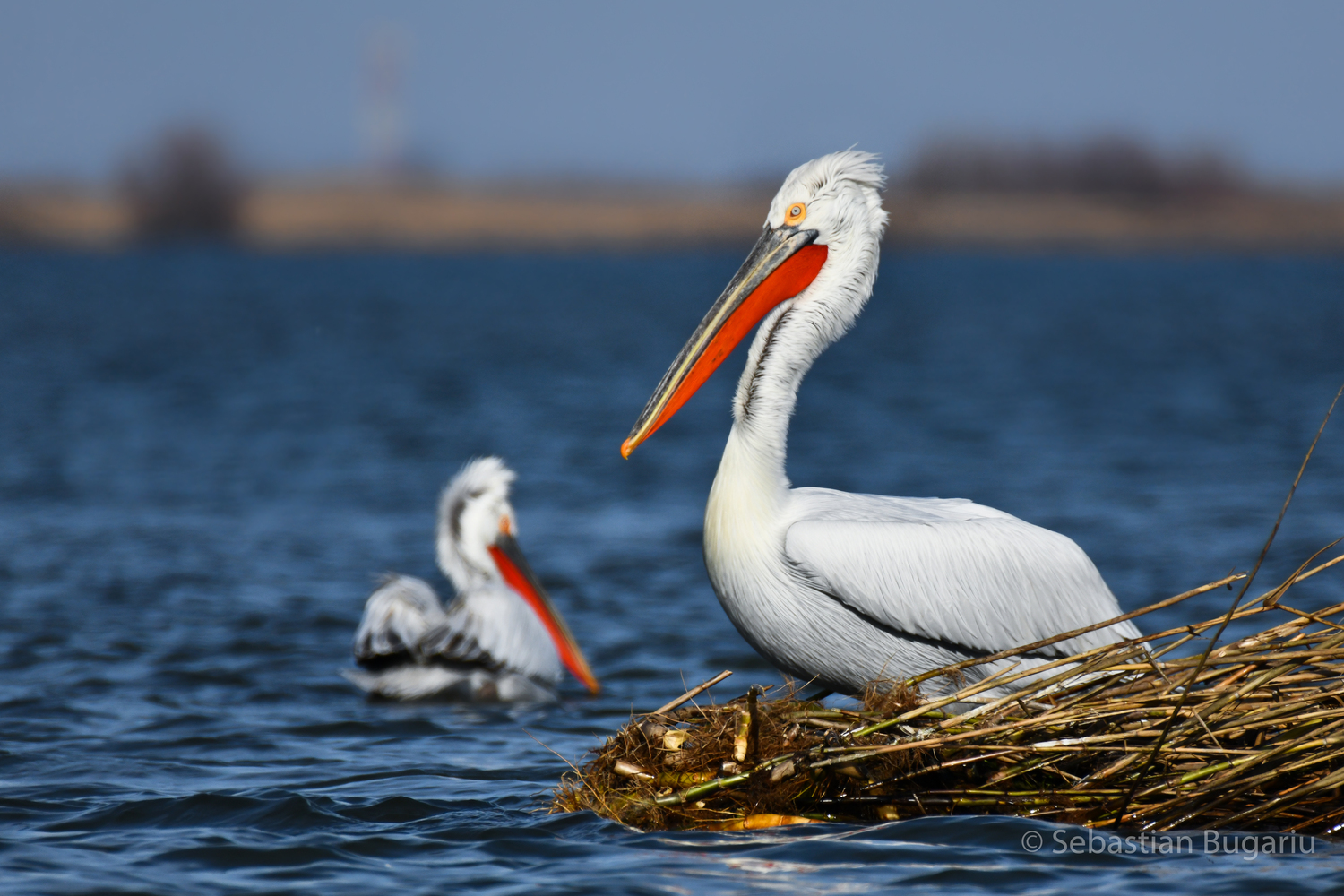
Crested pelicans. PHOTO: Sebastian Bugariou
Humans may be the main threat to this species and many do not realize it. For example, the area around Lake Tasaul, which has the status of “Natura 2000”, as Bugariou explains, is very well preserved from a natural point of view, where many species of birds live, both in migratory and non-migratory mode. and also during the nesting period.
“Few people know about this, and we are trying to bring such information to their attention, especially since there are many nature conservation areas in Dobrudja, and this is impressive and extraordinary,” he adds.
First of all, the biologist emphasizes, you should completely avoid disturbing the colony, but you can admire crested pelicans with the help of optical devices (binoculars or a spyglass).
“We constantly pose a problem or question to ourselves – how appropriate is it to popularize these areas? Often, if you don’t popularize the territory, you can get a better protection status,” he adds.
On the island of Tasaul, the Cretan pelicans have very good conditions, and even if there is a storm, there is no risk of flooding. But as Sebastian Bugariou points out, there is still a decades-old mentality among fishermen that the species must be fought because it affects the fishing industry.
“We are trying to change this perception. This is a sensitive subject given that these types of lakes are fisheries and in many cases concessionaires or owners stock fish and record losses.
We argue that there should be compensation for such damages, provided that these compensations are intended to benefit the species actually accused of causing the harm. For example, there is sport fishing in Tasaula, but there are rules that are established by the person who grants fishing rights,” the biologist states.
Pelican Way of LIFE, a project aimed at protecting the Cretan pelican population in Romania
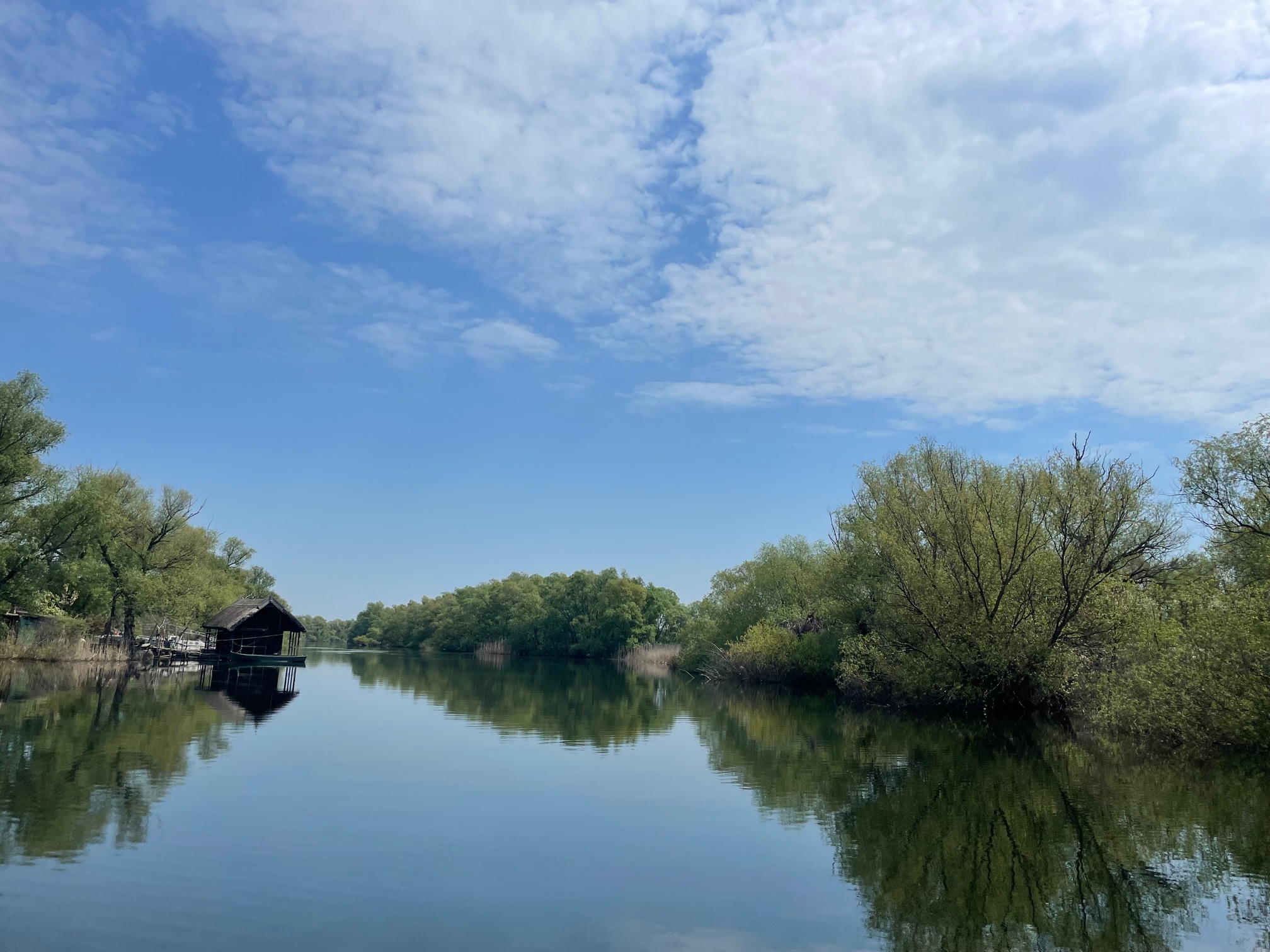
Danube Delta, April 2023. PHOTO: HotNews.ro/ Ana Tepșanu
The Danube Delta is one of Europe’s largest deltas, exceptionally rich in species, supporting a wider range of ecosystems than any other region in Europe.
Despite being home to more than 9,581 species of flora and fauna, the Danube Delta remains famous for its ornithological fauna, which numbers more than 340 species, almost 90% of the national bird fauna.
In 2019, SOR launched a new project dedicated to the conservation of the species, the reduction of threats to it and the improvement of nesting conditions “Pelican way of LIFE”. This is a pan-European project coordinated by Rewilding Europe, which is implemented in Greece, as well as in Bulgaria and Ukraine.
According to the SOR website, crested pelicans need access to quiet, shallow water bodies filled with fish away from human activity to nest. The main reason for this species’ decline is the loss of these habitats, but threats also include the destruction of colonies by fishermen, illegal hunting and collisions with power lines.
“In Romania, Greece and Bulgaria, the project team will work with electricity distribution companies to identify which lines are the most dangerous for pelicans, so that collision prevention devices can then be placed. “Detractors are simple devices visible from afar that allow birds to avoid power lines,” reports the Romanian Ornithological Society.
A similar project is LIFE Danube Free Sky, aimed at protecting birds from electrocution and collisions with power lines along the Danube, implemented by the Danube Delta Biosphere Reserve Administration together with E-Distribuție Dobrogea and in partnership with beneficiaries from seven European countries. .
“Everyone wants to see the pelicans in the Delta”
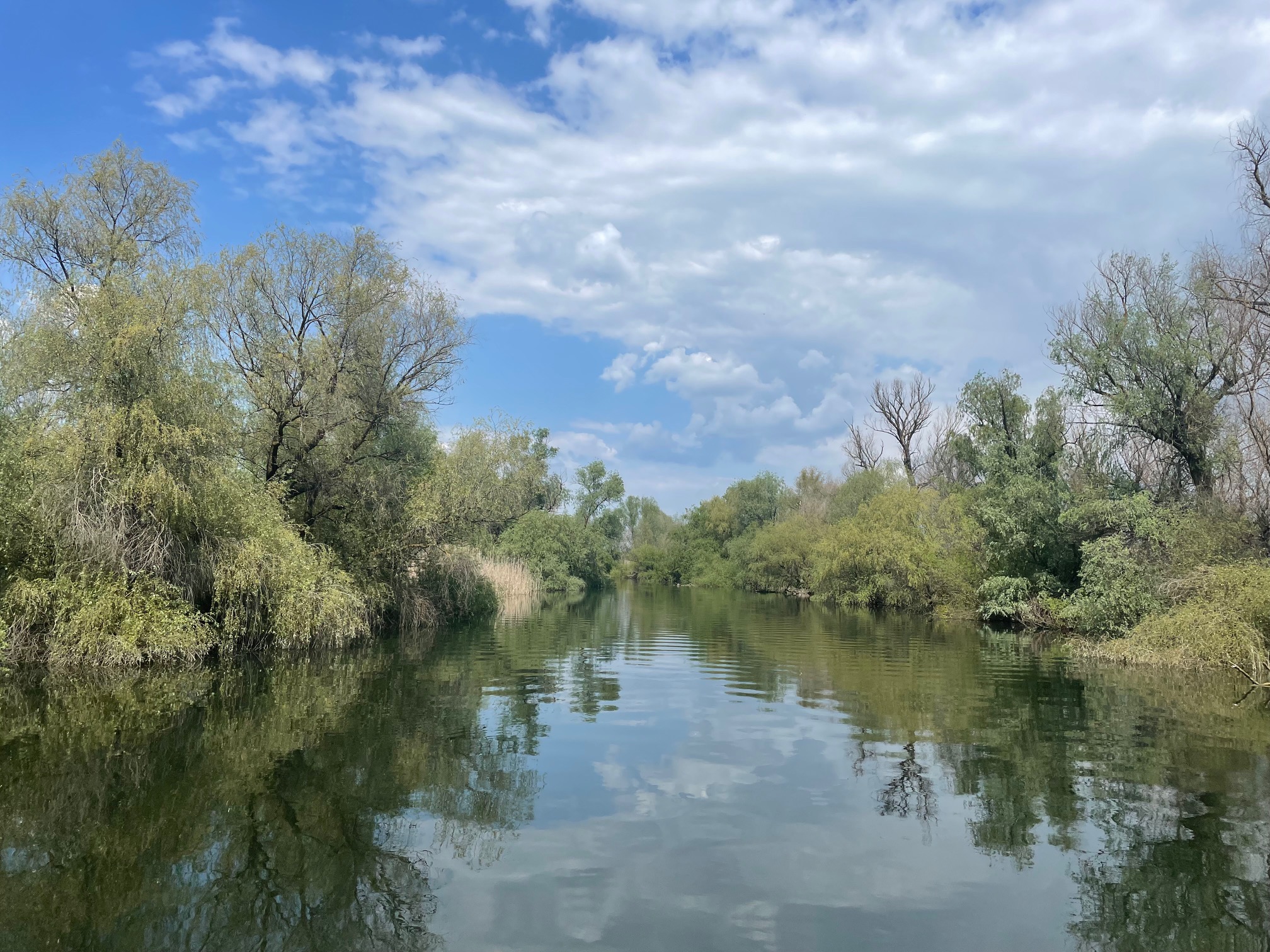
Canals of the Danube Delta. PHOTO: HotNews.ro/ Ana Tepșanu
A walk along the canals of the Danube Delta offers a real visual spectacle, and it is a privilege that we can enjoy such scenery in our country, with all the fauna and flora that it entails. You can see pelicans, white herons, cormorants, white cod, various interesting birds or even jackals and raccoons.
According to the 2011 census, the population of the Danube Delta is 12,638 inhabitants, and much of the tradition may be lost as tourism begins to develop more and more in the region.
Biologists and activists for the protection of this area believe that the Delta has become an area of exploitation and a source of funds, not conversations. Even if trips to the delta are encouraged, especially responsible, environmentally conscious and in small motorboats, many choose to disturb the peace of nature because of the desire to experience the most exciting experiences.
Sebastian Bugariu sounds the alarm, but at the same time emphasizes that the new generations have started to be more careful about these things.
“Everybody wants to see pelicans in the delta because it’s a popular species. Anyone, even if they have never been here before or have been several times, wants to see pelicans. In the summer, trips are organized, often as short as a day or a few hours, on large-tonnage boats with large engines, and tourists are taken at speed in the Delta, although they can’t see much.
If a flock of feeding pelicans is spotted somewhere, the boats speed up so the pelicans can get up and put on a show. We do not encourage this type of tourism, and nature lovers know that this is not done and support sustainable tourism, that is, one where you do not disturb the birds in their habitat,” he concludes.
- Read also: VIDEO. Why are there no more fish in the Danube Delta? The scientific point of view of a group of Romanian researchers accompanied by the HotNews.ro team from the scene: “The absence of oxygen in the water means the absence of life”
Source: Hot News
Ashley Bailey is a talented author and journalist known for her writing on trending topics. Currently working at 247 news reel, she brings readers fresh perspectives on current issues. With her well-researched and thought-provoking articles, she captures the zeitgeist and stays ahead of the latest trends. Ashley’s writing is a must-read for anyone interested in staying up-to-date with the latest developments.